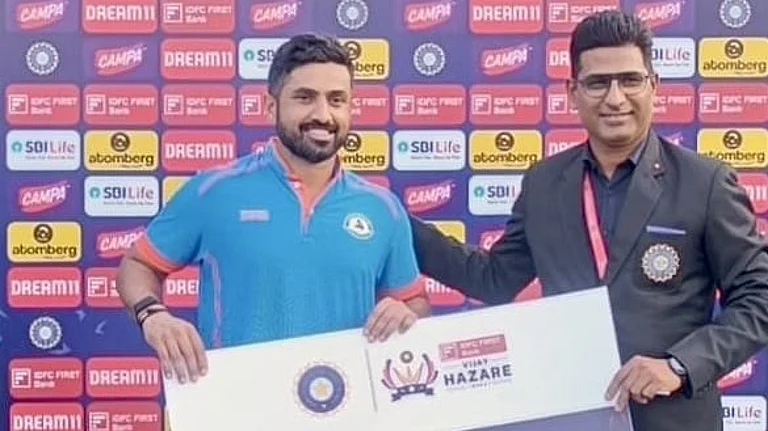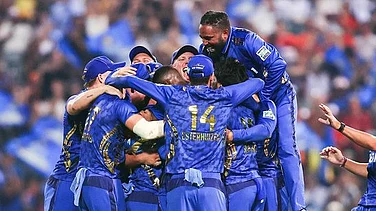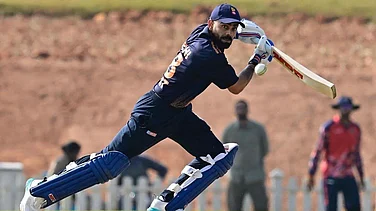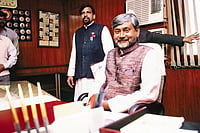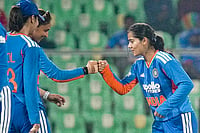Its in the interest of all cricket administrators to show that match-fixing never occurred. But the Delhi police waylaid the best plans of people wanting to look the other way; the tapes, not unlike Nixons Watergate tapes, carried both smoke and considerable fire. Hansie Cronjes admission of guilt, while welcome, was inevitable. If pangs of guilt alone were enough, then Pakistan opener Saeed Anwar wouldve stopped the rot ages ago. Anwar is reported to have felt guilty after receiving money. He revealed this to friends and Justice Qayyum and is believed to have been off the gravy train since. There are several other scandals lurking in the shadows. The question is: will there ever be enough evidence for fans to assess whether match-fixing actually took place?
Here its necessary to make transparent the meaning of match-fixing. Betting on cricket, and associated fixing, takes place on several match events-how many wides will there be in a match, will Cronje reach 50 runs, will South Africa score above 100 in the first 15 overs. And so on. For most betting junkies, there are several fix possibilities. The literal meaning of a match-fix is that the result of a match is pre-determined i.e. India will win, South Africa will lose, etc. A match-fix requires a fair amount of cooperation between the team members. For an account of difficulties in match-fixing, just ask Cronje about Lance Klusener, a cricketer who has upset many a forecaster and bookies alike. But finally, match-fixing is almost impossible to prove. Thus it is hard to believe that there will be enough evidence for a court of law. We have considerable evidence of Justices playing footloose with the facts and cricket administrators indulging in cover-up operations. Frankly, theres no reason to think that the Justices-or justice-will prevail.
Every cricket fan can cite examples where match-fixing was likely to have occurred-the plunge in Indias fortunes against Zimbabwe in the World Cup, Pakistan losing to Bangladesh in the same tournament, South Africa losing to India in 2000. These matches were upsets, and its clear that not every upset is a match-fix. But is there a method which will identify teams thatve been involved in unusually large number of upset matches?
Upset matches include those where event-fixing (such as Gibbs being fixed to score less than 20; Crookes opening the bowling etc) takes place without explicit match-fixing. Players can be provoked to play below potential. If event-fixing takes place, then the likelihood of an upset increases. In the aggregate, therell be a greater percentage of upsets when event-fixing occurs. Identifying teams involved in upset matches can help in obtaining circumstantial evidence of player involvement in event/match-fixing.
The key parameter needed for identifying upsets is the objective pre-match probability (PMP) of a team winning a match. When the actual result is at odds with the forecast, an upset occurs. The cricketX website has developed a comprehensive model of cricket. This model, covering both Test and one-day cricket, constructs pre-match probabilities on the basis of batting and bowling strength, pitch-fixing, home ground advantage, ability to play under stress etc. That the model yields solid results is indicated by its success in predicting match results (about 65 to 70 per cent) and also in dynamically (over by over) predicting the result of a match. (For the second innings of a one-day match, the success ratio-per cent of matches predicted correctly-is close to 80).
The cricketX model computes the PMP and therefore can establish if an upset occurred. Upsets happen about 35 per cent of the time. What if a team is involved in 50 per cent upsets in a given year when its peers are involved in upsets which account for only 35 per cent of matches played? This difference, 15 per cent, is the match-fixing indicator. Note that the method allows for a normal quota of upsets to occur; only excessive amounts of upsets are suggestive of foul play. In 99, India played 34 matches and only 50 per cent (17 matches) yielded the correct i.e. predicted result. Fifty per cent of matches were upsets. During the same year, matches not involving India had an upset percentage of 25. The cricketX match-fixing indicator for India for 1999 is therefore 50 minus 25 or 25 match-fixing points (MFP).
This model provides compelling evidence that match-fixing took place in the 90s. Whats most informative is the pattern fixing revealed over the years. The story is one of a travelling bookie searching for collaborators. It begins in the early nineties, possibly during or just after the 1992 World Cup. Treatises will soon be written as to why the match-fixing business flourished in India. The fact remains that its suspected that India was the hub and our evidence suggests the same.
Back to the honest bookie. This bookie finds willing comrades in India and Pakistan, societies where betting is illegal, government intervention in all forms of economic activity is huge and corruption is a necessary way of life. Profits are made and the net widens. Down Under players are seduced and the party goes on. But then differences occur. Journalists get suspicious. Shane Warne and Mark Waugh confess to providing weather information to bookies. Some Pakistani players feel they have done wrong (strangely, no such reports about any Indian player come forth). By 99 its almost all quiet on the eastern front. The Australians, Indians and Pakistanis have gone underground. Mums the word, come to us later, cellphones are for talking with the family, the hounds are out, etc. So what is an honest bookie to do? Obviously involve the South Africans, who are the only "winning" country left, and whose lily-white status has, so far, not been tainted by blackfix money.
The travelling bookie might be too pat and unbelievable. But the string of coincidences that have occurred is even more unbelievable. Take your pick.
The Past
In 94, Shane Warne and Mark Waugh provided "weather" information to bookies. Match-fixing points for the year: a respectable 14 per cent. In 95, despite playing 11 ODIs against Test nations, no evidence of match-fixing. Activity picks up in 96 and the MFP peaks in 97 at 25. In 98, the Australian MFP plummets to 14 and 0 and 3 in 99 and 2000. The Aussie Board slapped the wrists and apparently the punishment was harsh enough to cool betting ardour.
India: In 97, the BCCI set up a one-man committee to study match-fixing. Justice Chandrachud exonerated all players, found not the least bit of evidence, especially because he said it was impossible to fix matches. (Reminds one of the story about the man who lost his car keys and then walked 100 yards to the nearest lamp-post to look for his keys there!). While the inquiry was on, the model indicates zero match-fixing points for India. After this beatification report, bookies breathed profitable sighs of relief and India accumulated a high of 20 MFPS in 98, and even more (25 MFPS) in 99! With the heat on in 2000, lie low is the motto and there are zero MFPS.
Pakistan: The undisputed king of alleged match-fixing. Players have been dropped, captains reinstated, a lot of sound and fury, but so far, a damp squib. However, the draconian penalties rumored to be contained in the Justice Qayyum report seems to have been the perfect deterrent. The green caps accumulated a lot of MFPS: 26 in 95 and 28 in 97. In 98, Qayyum came in and the rot stopped. No match-fixing points for three years. The notorious Bangladesh-Pakistan World Cup match is excluded from the list of ODIs played between Test nations. Perhaps that match provided the fix the junkies needed.
South Africa: For five years, this team wasnt involved in any "wrong decision" matches. During the two golden years of match-fixing-97 and 98-SA played 42 ODIs and was involved in only 12 upsets. In contrast, its peers played 161 matches out of which about half (78 matches) were upsets. But the slack season was awaiting the big event. In 2000, matches not involving the Springboks yield an upset in only 22 per cent of the games. But matches with Cronje leading yield an upset in 42 per cent of the matches to earn 20 MFPS in 2000.
The Future
The Asia Cup starts in end-May. Enjoy it, for itll be the first clean tournament in quite some time. Itll be notable for the telling absence of mobile phones from dressing rooms. Pakistan, India and Sri Lanka are evenly matched and Bangladesh has a half-decent chance of winning one match. The honest bookie has nowhere to turn. But give him a few months. Hell be back, or Im a Bharatanatyam dancer.









